Tornio 作者: 来源: 发布时间:2021-10-15
一、所属省或是州,具体位置,人口,面积
Tornio is a city and municipality in Lapland, Finland. The city forms a cross-border twin city together with Haparanda on the Swedish side. The municipality covers an area of 1,348.83 square kilometres (520.79 sq mi), of which 161.59 km2 (62.39 sq mi) is water. The population density is 18.4 inhabitants per square kilometre (48/sq mi), with a total population of 21,837 (31 January 2019). It borders the Swedish municipality of Haparanda (in Finnish: Haaparanta).
In spite of being a border city Tornio is unilingually Finnish with a negligible number of native Swedish speakers, although this does not count vast numbers of bilinguals who speak Swedish as a second language, with an official target of universal working bilingualism for both border municipalities.
www.tornio.fi
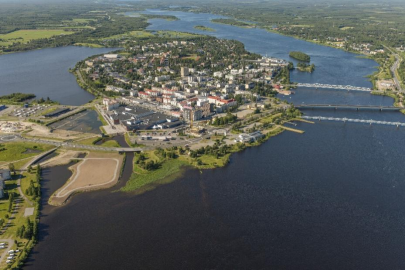
二、自然地理
1.地理条件
Tornio is located on the Finnish-Swedish border at the northern end of the Baltic Sea. The border river Tornionjoki flows here into the Bottenwiek (the northernmost part of the Gulf of Bothnia). Tornio is part of the Lapland landscape, but historically it is mostly part of the Peräpohjola region. The city center of Tornio is located on the now deserted river island Suensaari in Tornionjoki, right on the border with Sweden.
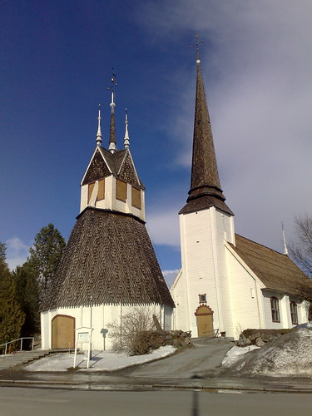
Neighboring towns and municipalities of Tornio are Kemi and Keminmaa in the east, Tervola in the northeast Ylitornio in the north and the municipality Haparanda on the Swedish side in the west. Their main town Haparanda is located directly opposite the city center of Tornio and, although separated by a state and time zone boundary, forms a twin city with it. Kemi town center is 25 kilometers east of Tornio. Together with some surrounding communities, these two cities form the Kemi-Tornio region.
www.tornio.fi
2. 交通情况
A break of gauge occurs at Tornio between the Finnish and Swedish railway systems. A bogie exchange and variable gauge axle track gauge changing facility are provided. Tornio has a passenger service provided from Tornio-East station by Finnish Railways VR three days a week overnight. Kemi-Tornio Airport is located in Kemi, about 18 kilometres (11 mi) south-east from Tornio city centre. Highway 29 (part of the European route E8) between Keminmaa and Tornio is the world's northernmost motorway. Tornio is also the northern terminus of European Route E4.
www.tornio.fi
三、经济发展和规模
Tornio is an industrial city. 36% of the workforce is employed in the industrial sector. By far the most important employer is the Outokumpu group, which employs 2,300 people in its ferrochrome and stainless steel plants. In addition to the metal industry, the textile industry is based in Tornio. The Nanso Group produces socks in Tornio. 132 people work in the factory. Until 2010, one of the most famous Finnish beer brands, Lapin Kulta, was produced in Tornio. The brewery was founded in 1873 as Torneå Bryggeri Aktiebolag, had been part of the Hartwall Group since 1980 and most recently employed 100 people before production was relocated to Lahti. 28% of the workforce is employed in the public service. The city administration is the second largest employer with 1,382 jobs. 3% of the population live from agriculture and forestry in the rural areas of the urban area. There are a total of 192 farms in Tornio, which mainly dairy.
The unemployment rate in Tornio, at 14.2% (annual mean 2006), is significantly higher than the national average, but is just below the average of the Laplands. Due to the excellent geographic location, the city offers also natural prerequisites for new transport and logistic services and is the logistics hub for the Bothnian arc. Approximately 14 million people travel through the border crossing points of TornioHaparanda every year.
TornioHaparanda is also a meeting point for the eastern and western railway network: our city provides access to both Central and Southern Europe as well as Russia, all the way to Vladivostok. Sea access is provided by the Port of Röyttä and Ajos in nearby Kemi. The area is further connected by airports at Kemi-Tornio, Oulu, Rovaniemi and Luleå.
www.tornio.fi
四、产业特点/重点项目
By far the most important employer is the Outokumpu group, which employs 2,300 people in its ferrochrome and stainless steel plants. Tourism plays a less important role in Tornio than in the rest of Lapland, which with its winter sports centers and wilderness areas attracts numerous ski and nature tourists. Tornio markets itself in association with Haparanda under the slogan "limitless experiences". One of the tourist attractions of the twin city is the cross-border Green Zone golf course, where a tee shot from the Swedish side to Finland remains in the air for an hour due to the time zone limit.
TornioHaparanda forms part of Sea Lapland economic area comprising Kemi, Keminmaa, Simo and Tervola. The economic area is home to more than 70 000 people with strong industrial and commercial clusters.
www.tornio.fi
五、风景名胜,景点( attractions)
1. Tornio Church
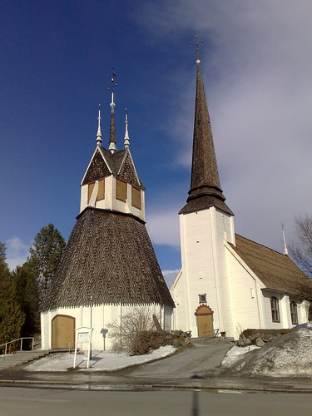
The church was designed and completed by Matti Härmä in 1686. It is dedicated to the Swedish Queen Eleonora. The construction is based on the medieval tradition of church building in Pohjanmaa area (Mustasaari and Pedersöre churches). Tornio church is one of oldest and most well-preserved wooden churches in the Northern Finland and Scandinavia. In the 18th century French scientist Maupertuis did measurements in Finnish Lapland to determine the shape of the Earth. The starting point was the bell tower of the church. The church is open summertime, other times by request.
www.tornio.fi
2. Museum of Tornio Valley
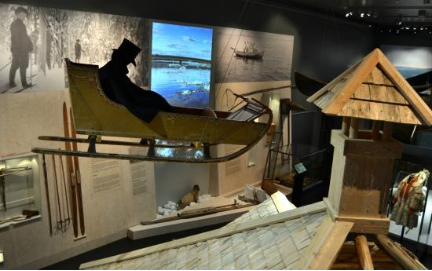
The Museum of Tornio Valley showcases Tornio Valley culture and history on both sides of the Finnish-Swedish border. The Museum specialices in the local way of life and border region phenomena. The permanent exhibition highlights the traditional means of living, the history of Tornio and Haparanda cities, border trade, smuggling and marriages across the border. Visitors can listen to local languages and dialects in special chairs. The artifacts and abundant picture an film material on display makes the past come alive.
https://fi.wikipedia.org/wiki/Tornio
www.tornio.fi
3. Aine Art Museum
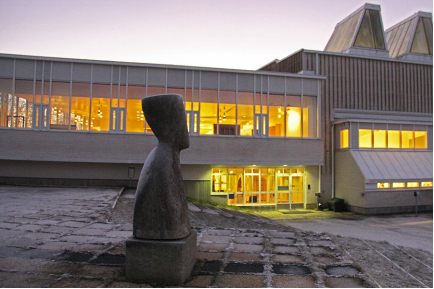
The Aine Art Museum is an active meeting place for fine arts in Tornio. Among other things, the museum offers exhibitions from the permanent collection, temporary exhibitions, workshops, and lectures. The Aine Art Museum was born from the love of art shared by Eila and Veli Aine, residents of Tornio. The collection of the Aine Pictorial Art Foundation, which was founded in 1974, form the basis for the Aine Art Museum operations.
www.tornio.fi
六、历史文化
1.历史
The delta of the Torne river has been inhabited since the end of the last ice age, and there are currently (1995) 16 settlement sites (boplatsvallar) known in the area, similar to those found in Vuollerim (c. 6000–5000 BC). The Swedish part of the region is not far from the oldest permanent settlement site found in Scandinavia. A former hypothesis that this region was uninhabited and "colonised" from the Viking Age onward has now been abandoned.
The church spire at Tornio was one of the landmarks used by de Maupertuis in his measurements. The church was constructed in 1686 by Matti Joosepinpoika Härmä.
Until the 19th century, inhabitants of the surrounding countryside spoke Finnish, and Kemi Sami, a language of the Eastern Sami group similar to Finnish, while those of the town were mainly Swedish-speaking.
The name 'Tornio' is an old Finnish word meaning war spear: the city is named after the river. To Swedish it was borrowed as Torneå after Torne å, an alternative name of the river.
The town received its charter from the King of Sweden in 1621 and was officially founded on the island of Suensaari (possibly named after one of the main landowners of the past). The charter was granted in recognition of Tornio being the hub of all trade in Lapland throughout the 16th century. It was the largest merchant town in the North at the time and for some years ranked as the richest town in the Swedish realm. Despite the lively trade with Lapland and overseas, the population of the town remained stable for hundreds of years at little over 500.
During the 18th century Tornio was visited by several expeditions from Central Europe which came to explore the Arctic. The most notable expedition (1736–1737) was led by a member of the Académie française, Pierre Louis Moreau de Maupertuis, who came to take meridian arc measurements along the Meänmaa which would show that the globe is flattened towards the poles.
The Lapland trade on which Tornio depended started to decline in the 18th century, and the harbour had to be moved downriver twice as a result of the rising of the land (post-glacial rebound), which made the river too shallow for navigation. However, the greatest blow to the wealth of the town came in the last war between Sweden and Russia in 1808, which saw the Russians capture and annexed Finland. The border was drawn through the deepest channel of the Muonio and Tornio rivers, splitting Lapland into two parts, with deleterious effects on trade. Tornio ended up on the Russian side of the border by special request of the Russian czar. The Swedes developed the village of Haaparanta (present day Haparanda) on their side of the border, to balance the loss of Tornio, and Tornio became unilingually Finnish.
During the Russian period Tornio was a sleepy garrison town. Trade only livened up during the Crimean War and the First World War, when Tornio became an important border crossing for goods and people. During the First World War Tornio and Haparanda had the only rail link connecting the Russians to their Western allies.
After the independence of Finland in 1917 Tornio lost its garrison and experienced further decline. although its population increased steadily. The town played no role of importance in the Finnish Civil War, but was the scene of some fierce street fighting at the onset of the Lapland War between Finland and Nazi Germany. The rapid liberation of the town by Finnish forces probably saved it from being burned down like so many other towns in Lapland. As a result, the beautiful wooden church from 1686 can still be admired today.
After World War II, the town created new employment built on the success of the local Lapin Kulta brewery and the Outokumpu stainless steel mill. Tourism based on the border has also been a growing industry. The town is a centre of education for Western Lapland with a vocational college and a university of applied sciences.
www.tornio.fi
2. 文化体育
Tornio and Haparanda have a history as twin cities, and are currently set to merge under the names TornioHaparanda and HaparandaTornio. A new city centre is under construction on the international border and several municipal services are shared. The towns also share a common golf course, situated astride the border. The new IKEA store in Haparanda has signposting in Finnish as well as in Swedish, and all prices are signposted in two currencies.
Tornion Palloveikot, or just ToPV, is a bandy club which play in the Bandyliiga and has become Finnish bandy champions several times. They play their home matches in Haparanda, just on the other side of the Swedish border, which was the venue for games at the 2001 Bandy World Championship.
Teemu Tainio, footballer, was born in Tornio.
Jesse Puljujärvi, ice hockey player, lived his childhood in Tornio.
Ville Pokka, ice hockey player, was born and raised in Tornio.
www.tornio.fi
七、其他信息
The island of Suensaari is located in the historic center, where the most significant buildings of the city are located. In the Juhannussaari district, for example, there are many homes for wealthy families in Tornio built in the 1970s. On the other hand, religious buildings predominate in the city.
www.tornio.fi
八、联系方式
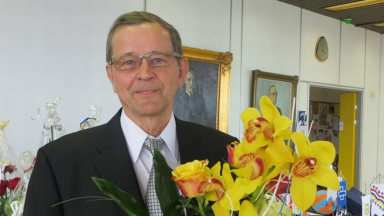
Mayor of Tornio: Raimo Ronkainen
Website:www.tornio.fi
Phone number: + 358 16 432 11
Email: kirjaamo@tornio.fi
Address: Tornion kaupunki, Suensaarenkatu 4, 95400 Tornio
www.tornio.fi
